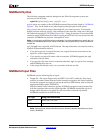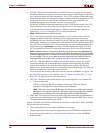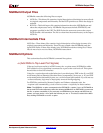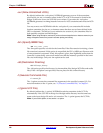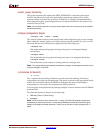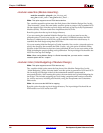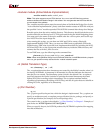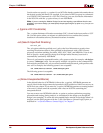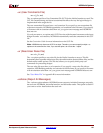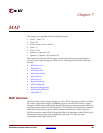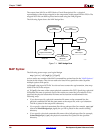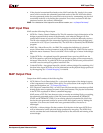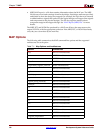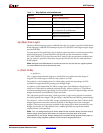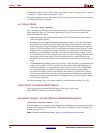
Development System Reference Guide www.xilinx.com 127
NGDBuild Options
R
–uc (User Constraints File)
–uc ucf_file[.ucf]
The –uc option specifies a User Constraints File (UCF) for the Netlist Launcher to read. The
UCF file contains timing and layout constraints that affect the way the logical design is
implemented in the target device.
The user constraints file must have a .ucf extension. If you specify a user constraints file
without an extension, NGDBuild appends the .ucf extension to the file name. If you specify
a file name with an extension other than .ucf, you get an error message and NGDBuild
does not run.
If you do not enter a –uc option and a UCF file exists with the same base name as the input
design file and a .ucf extension, NGDBuild automatically reads the constraints in this UCF
file.
See the Constraints Guide for more information on the UCF file.
Note:
NGDBuild only allows one UCF file as input. Therefore, you cannot specify multiple –uc
options on the command line. Also, if you use this option, do not use the –i option.
–ur (Read User Rules File)
–ur rules_file[.urf]
The –ur option specifies a user rules file for the Netlist Launcher to access. This file
determines the acceptable netlist input files, the netlist readers that read these files, and the
default netlist reader options. This file also allows you to specify third-party tool
commands for processing designs.
The user rules file must have a .urf extension. If you specify a user rules file with no
extension, NGDBuild appends the .urf extension to the file name. If you specify a file name
with an extension other than .urf, you get an error message and NGDBuild does not run.
See “User Rules File” in Appendix B for more information.
–verbose (Report All Messages)
The –verbose option enhances NGDBuild screen output to include all messages output by
the tools run: NGDBuild, the netlist launcher, and the netlist reader. This option is useful if
you want to review details about the tools run.



